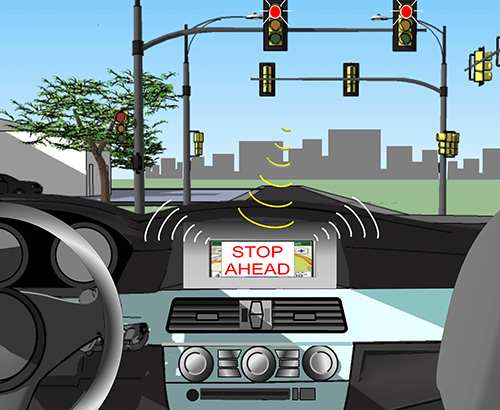Educating the Next Generation on Intelligent Transportation
Innovation and creative problem solving are the cornerstones of a modern transportation system. To make sure America’s transportation workforce is qualified and highly skilled, U.S. DOT offers the Intelligent Transportation Systems Professional Capacity Building (ITS PCB) Program, which increases ITS and connected vehicle knowledge, skills, and abilities for transportation professionals.
Every year, Volpe staff support the ITS PCB Program’s efforts to expand its outreach to new audiences and broaden the ITS workforce. The Volpe team provides a variety of support to the ITS PCB Program, including the following:
- Leading coordination with academia to develop and expand ITS and connected vehicle curricula at educational institutions.
- Managing and producing ITS webinars.
- Managing the ITS PCB website in coordination with the overall ITS website (sponsored by the U.S. DOT’s ITS Joint Program Office).
- Coordinating with professional associations to develop and deliver ITS training.
- Quickly responding to short-term needs of those planning and deploying established ITS technologies and applications, while ensuring appropriate levels of awareness and technical training for current and future transportation professionals.
Educating the Workforce
Volpe has supported ITS education and training since the initiation of the ITS PCB Program in 1997 and continues to work with the Institute of Transportation Engineers (ITE) to develop ITS standards and ITS transit standards training modules. These trainings make it easier for transit agencies to more smoothly apply ITS technology standards.
 Volpe provided input on and aided in the final design, development, and production of the ITS PCB Program’s 14-chapter ITS ePrimer and the recently released 11-module ITS Transit Standards training series. This March, Volpe worked with ITE to create a webinar series on the ePrimer.
Volpe provided input on and aided in the final design, development, and production of the ITS PCB Program’s 14-chapter ITS ePrimer and the recently released 11-module ITS Transit Standards training series. This March, Volpe worked with ITE to create a webinar series on the ePrimer.
The ITS PCB Program continues to expand ITS, connected vehicle, and autonomous vehicle awareness and knowledge to new audiences. Based on mid-year figures, it is projected that the ITS PCB Program will reach more than 44,000 participants—up more than 30 percent from the fiscal year 2014 participation level—across 255 live and on-demand education offerings.
Educating Students
Since 2012, Volpe has led the ITS PCB Program’s concerted effort to coordinate with university programs and provide ITS training materials to support inclusion of ITS education within engineering and computer science programs. This has included the development of free modular ITS case studies and ePrimer modules.
Over the past year, through the U.S. DOT Small Business Innovative Research (SBIR) program, Volpe’s ITS PCB team has overseen the development of ITS and connected vehicle curricula for middle schools, high schools, community colleges, and trade schools. The hope is that these efforts will expand interest in ITS and connected vehicles among students seeking engineering and computer science degrees.
There are two trials for the SBIR-funded programs—one each for secondary and higher education. Integrated Global Dimensions, LLC, is leading the development of higher education curricula at Metropolitan Community College in Omaha, Nebraska. NanoSonic, Inc., is developing the secondary education curricula in Giles County, Virginia. These small businesses plan to expand their educational products well beyond their partner schools over the next couple of years.
“There is currently an unmet demand in the industry,” said David Jackson, a transportation industry analyst at Volpe. “If you’re able to educate young people early, they realize the impact transportation has on everyday life. We’ve quickly realized with the STEM program in Giles County that there is the potential for making these applications fun, and that students are engaging and having positive experiences with the applications. NanoSonic and Giles County schools started an afterschool program last semester, and the number of kids who want to be in the afterschool program has since doubled.”
Volpe is also seeking to utilize other resources to expand both the reach of the two SBIR activities and to offer ITS, connected vehicle, and autonomous vehicle awareness, outreach, and training to a wider audience. Volpe has connected with the Department of Education, as well as making initial overtures to the nation’s five regional transportation workforce centers, to see how all parties can benefit from sharing their existing networks and determining the best methods for using the vast array of ITS training products.

